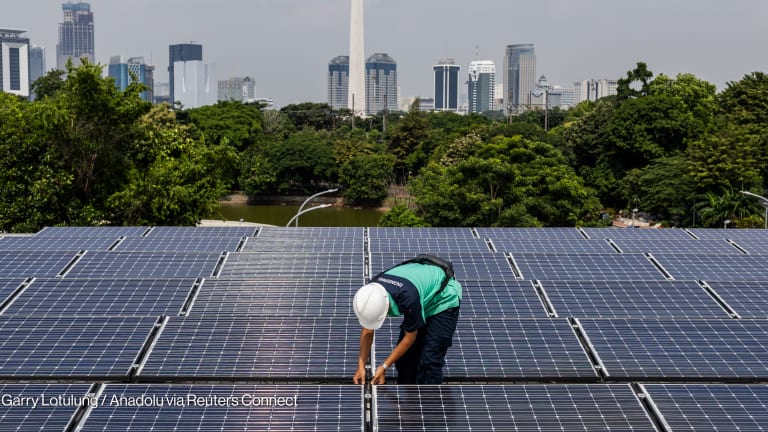
A new financing deal worth $1 billion in concessional loans and grants was approved for South Africa and Indonesia to fund the two countries’ transition away from coal to clean energy.
The money comes from the Climate Investment Funds, a government-backed trust fund founded in 2008 that works with multilateral development banks to help lower-income countries shift more quickly to low-carbon economies. It will be split evenly between the two emerging market G-20 countries.
Bigger picture: The funds for South Africa are part of an $8.5 billion climate finance deal several high-income countries are offering the country, which gets 87% of its electricity from coal-fired plants. It is meant to help South Africa retire several of those plants, and the financing has earmarks to support employment opportunities for coal workers.
The Pro read:
Blended finance for climate fell 60% despite calls for more funds
The scale of blended finance has increased off 2020 lows, but climate finance is lagging behind. A new report blames a lack of coordination between the public and private sector.
That $8.5 billion deal — which includes money from Germany, France, the United States, and United Kingdom, along with the European Union — was announced at last year’s Climate Change Conference summit in Glasgow, and has been touted as a potential template for additional deals to prompt “just transitions” for energy in other countries, even as negotiations have been fraught.
Mostly loans: The South African deal is almost entirely based on loans, though more than half are at concessional rates. According to a recent report, only 3% is coming from grants. In a press release Thursday, CIF said the $500 million in financing will “directly catalyze” $2.1 billion in additional clean energy investments. About $45 million of the total is in grants. South Africa estimates it will need $60 billion in investments for its energy transition.
The two deals for decommissioning coal plants will be “equivalent to taking nearly 14 million gasoline-powered cars off the road for a year,” CIF said. That’s 71 million metric tons of carbon dioxide.
Biggest coal exporter: Indonesia, for its part, has two challenges: It is the world’s largest exporter of coal, having abundant supplies, and many of its power plants are young — meaning they have years of life and pollution ahead.
The CIF plan carves out support for key coal-producing regions, including South Sumatra, as they will be hit-hardest by the energy transition.








